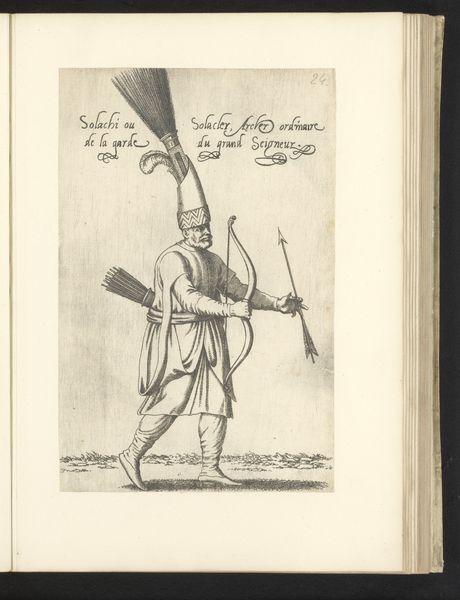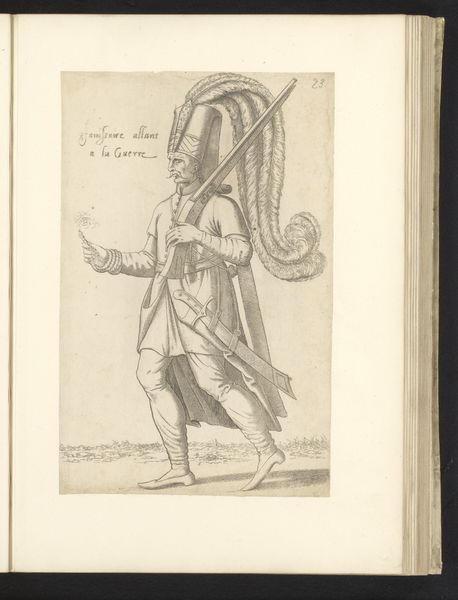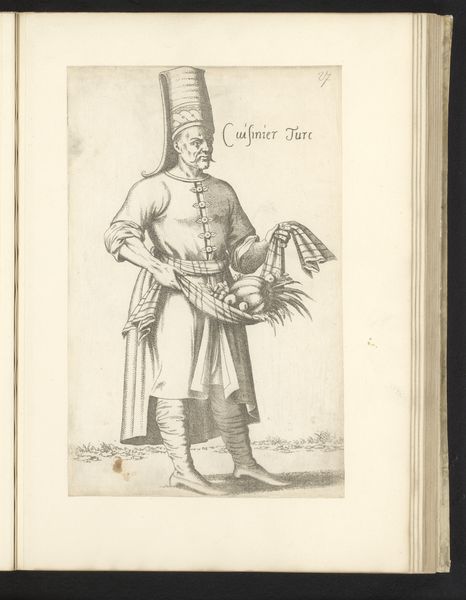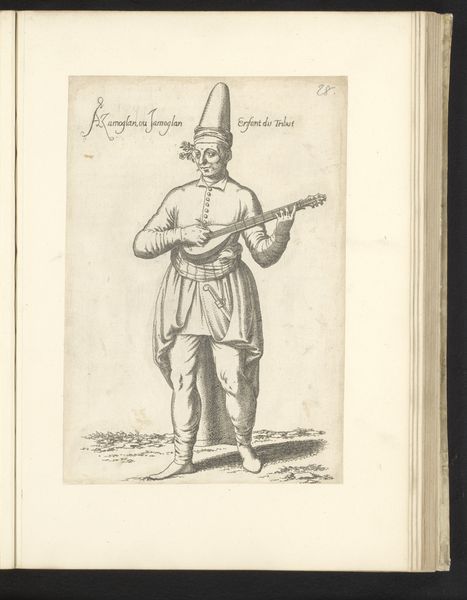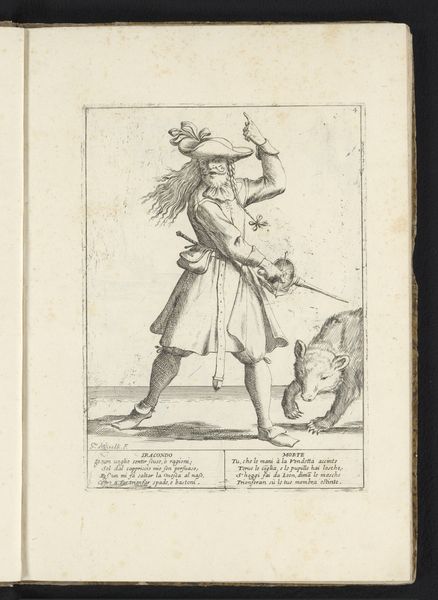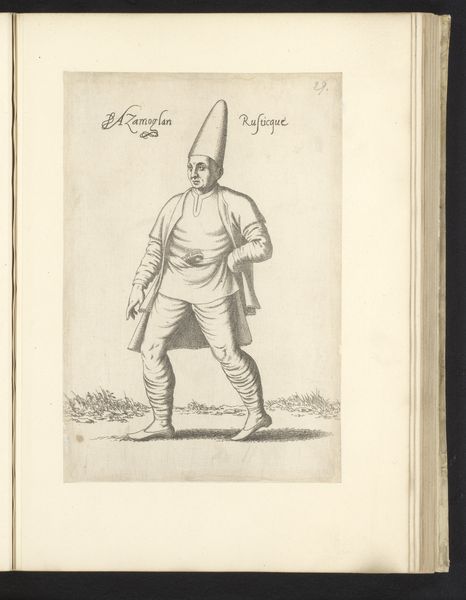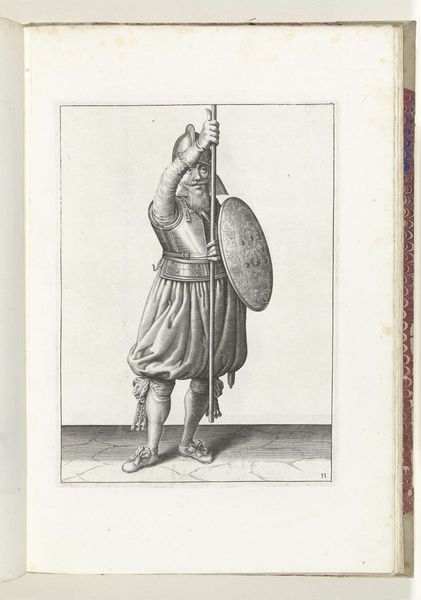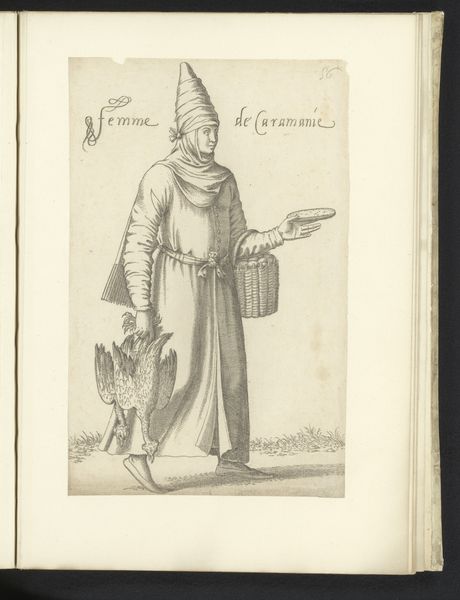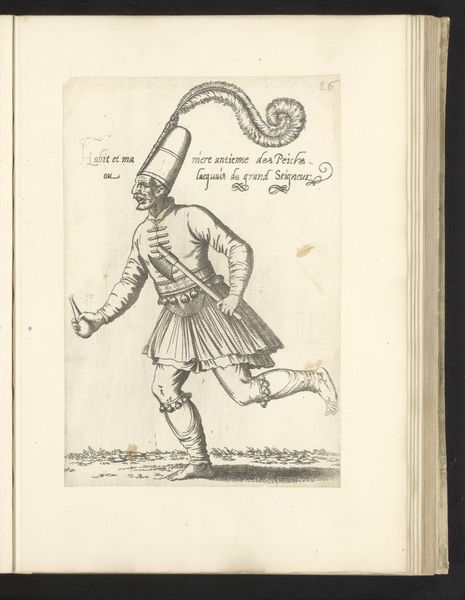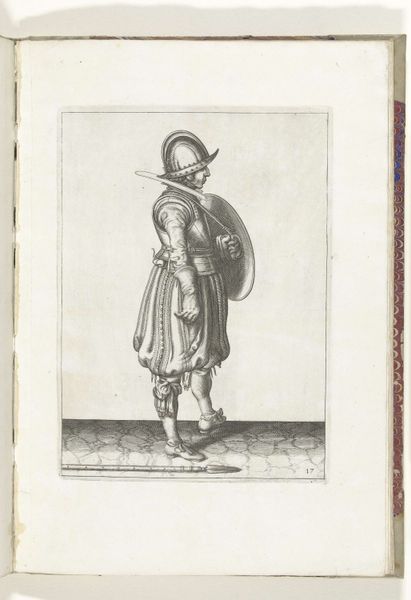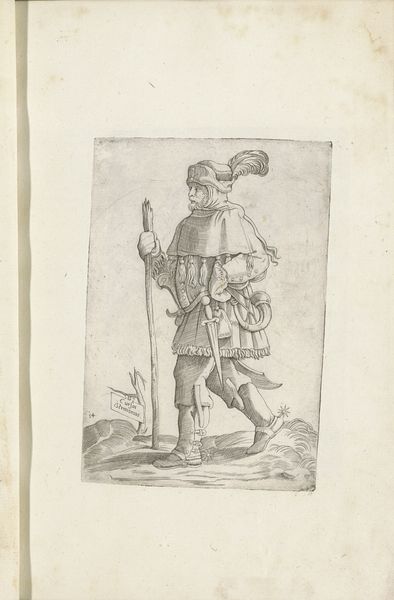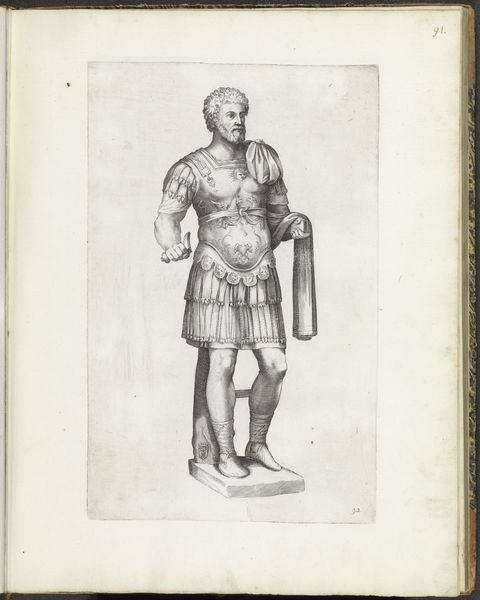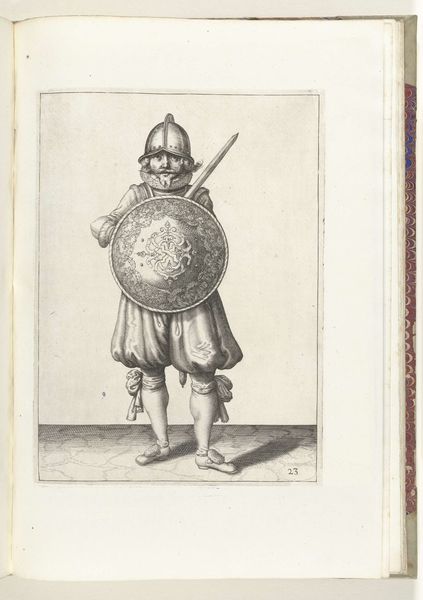
print, engraving
#
portrait
# print
#
figuration
#
line
#
history-painting
#
northern-renaissance
#
engraving
Dimensions: height 261 mm, width 174 mm
Copyright: Rijks Museum: Open Domain
Curator: Here we have Léon Davent's engraving, made between 1555 and 1568, titled "'Peich' of 'peicler' (lakkei) met bijl". It presents a standing figure, complete with an axe slung over his shoulder. What's your initial impression? Editor: He appears self-assured, almost defiant. The stark lines emphasize a hierarchical narrative; the lavish clothing and prominent axe are hard to ignore, hinting at power and perhaps violence. Curator: Absolutely. That axe is more than just a tool; it’s a symbol. Notice how its head aligns almost perfectly with his own—it signifies his role, his purpose as an instrument of power. It speaks to a long tradition of military iconography and the Ottoman-Persian wars during that time. Editor: That makes me wonder, for whom was this image intended? It clearly exoticizes the 'Persian,' positioning him in relation to Western power dynamics. What narratives did this image perpetuate, and what fears did it tap into? Curator: The meticulous detailing also adds layers to the subject. The Persian influences in clothing are depicted in fine lines—it evokes wealth but also points to cross-cultural communication and exchange, despite underlying tensions. Remember, this was a time of burgeoning interest in the "Orient." Editor: Yet, this attention to detail also raises questions. Is this supposed to be a realistic depiction or an idealized, orientalist fantasy? The very act of engraving inherently flattens complex identities into easily digestible, and possibly prejudiced, images. Curator: It’s both, I believe. There's an inherent contradiction, wouldn't you say? A push and pull between observation and interpretation. The image flattens nuances as all visual representations do; in that way it both fails to achieve fidelity, and creates continuity in how this man and his cultural symbolism might be considered over the years. Editor: Well, looking closely at the positioning, the figure certainly appears very proud— but this could simply be a display to reinforce dominance or cultural otherness, as viewed by Europeans at the time. Curator: Indeed, we need to examine who is viewing this image and from what point in history. I see visual continuity. You are right to see the critical implications regarding cultural narratives and perhaps social power imbalances at work. Editor: Ultimately, artworks like these remind us that images don’t merely reflect reality, they actively shape and perpetuate narratives. Recognizing this makes us responsible, more nuanced viewers.
Comments
No comments
Be the first to comment and join the conversation on the ultimate creative platform.
